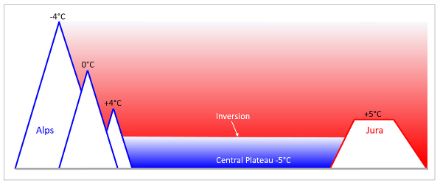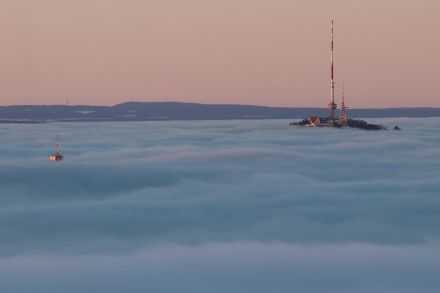Service Navigation
Search
- Weak sunlight or low sun: this is the case in the period from mid-October to the first half of February
- Little wind in the lower air layers (except in the case of the northeasterly "Bise" wind): this is the case in high-pressure conditions
- Few clouds: also the case in high-pressure conditions
- The moist, cold air must be able to accumulate in a basin, which is very much the case on the Swiss Plateau

The conditions for persistent fog or low stratus are often met during high-pressure situations in the autumn and winter months. Stable high-pressure conditions will produce cold air at night. On the one hand, the heavy cold air flows slowly near the ground from the Alpine valleys and the Jura towards the Swiss Plateau. On the other hand, it forms locally through radiation on clear nights on the Swiss Plateau.
This creates a temperature inversion or inversion layer. Because the sun is low and there is little energy available, the resulting pool of cold air cannot fully dissipate during the day. As a result, temperatures on the Swiss Plateau usually drop somewhat from day to day.
Since cold air can absorb less moisture than warm air, condensation occurs over time, resulting in the formation of fog. If a pronounced inversion has formed, the stratification at the lower levels of the atmosphere is extremely stable. The inversion can then only be cleared by stronger winds, which occur when disturbances, mostly cold fronts, pass through.

The typical fog months are November and December. These months have the greatest likelihood of fog or low stratus persisting throughout the day or even for several days.